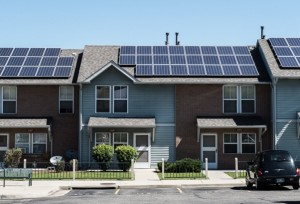
Even as the government of India is trying to implement the National Solar Mission to install 100 GW of solar power by 2022, there as several myths due to which people are still averse to install solar power at rooftops of their homes or even ground mounted panels. While many solar EPC companies are making strides in going after rooftop solar modules more vigorously; there are still a0prehensions or myths about viability of solar power. Even as acceptance of solar power increases as a alternative/clean source of energy; here are some of the greatest myths about solar power that have been refuted with facts.
Myth 1: Solar Panels Damage Roofs
Fact: The solar photovoltaic panels attached to rooftops are mad using modern materials. Holes are drilled into a roof to attach the solar panels, but it doesn’t damage the roof. Expert solar EPC installation companies follow industry standards and use quality flashed mounts to ensure the roof is made waterproof.
Myth 2: Solar Panels Are Loud & Unreliable
Fact: There are no moving parts, as such solar panels are virtually silent. The inverter sometimes may make humming noise, but modern inverters are often too quiet to be heard humming and all noise even if it’s there; it stops at night when there’s no solar power to convert. As most solar panels produce power for over 20 years and most solar EPC installers offer 25 year warranty so if there is any problem, the EPC installer is always at hand.
Myth 3: Solar Panels Don’t Work Well In Cold Weather
Fact: If there is daylight during winter season, solar panels work effectively. This is why Germany; receives around same sunshine time as the cold Alaska region is a superpower in solar. As a matter of fact, solar panels are built to withstand varying temperatures, and sensitive solar panels can produce electricity even from indirect sunlight.
Myth 4: Solar Panels are Eyesore
Fact: Solar panels are now available in variety of large or small square/rectangular shapes. Solar power companies also offer solar shingles, which are thin, film-like panels that are strapped to roofing like regular shingles. Professional installers can install solar panels on any type of roof and condition. They take care not to damage a homeowner’s roof, in some cases, solar panels even help save the roof by protecting it from elements. The aesthetically installed solar panels by professionals ensure the solar panels don’t adversely affect the eye. Depending on requirement and availability solar panels can also be mounted on the ground on prefabricated mounts/frames or even as solar car port.
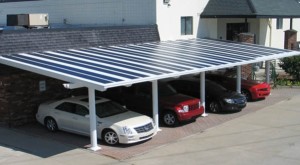
Myth 5: Solar Panels Aren’t Allowed Where You Live
Fact: Nowadays every town/city is looking to enhance use of solar panels as a alternative means to generate clean electricity; save precious resources and cut pollution. All one needs to do to seek and obtain the right kind of permits from local authorities and install solar panels. A local solar panel installer who knows the local building codes can be helpful.
Myth 6: Solar Panels are Too Expensive
Fact: As use of solar power grows thanks to government policies, solar panels are set to get cheaper. The benefits of solar panels outweigh the costs; from average savings on monthly electricity bills to government tax credits and subsidies. All this help cut prices of solar prices in the initial stage itself. Almost every state offers some type of incentive for solar panel installation. Better do research on the solar energy incentives provided in your state. The central government currently offers 30% tax credit for installing solar array systems.
Also, net metering plans that buy back a solar customer’s excess electricity help bring in cash for the homeowner. As solar panels are designed to meet specific requirement of each home; cost of installing solar panels depends on orientation and slope of the home’s roof. Also the surrounding area needs to be considered when setting up solar panels for easy access to sunlight and is not obstructed by surrounding trees or buildings. As such solar power is no way expensive.
Myth 7: Solar Panels Require Heavy Maintenance
Fact: Residential solar panel systems last a long time unlike a factory or office that often see heavy use. Proper maintenance can stretch their lifespan up to 40 years with annual warranties for the entire lifecycle of the solar panel ad related system. Cleaning of solar panels with a scrub/sponge and water once or twice a year is the only time consuming maintenance job that needs to be done to remove dust and debris; as these can decrease efficiency of solar panels by up to 25%.
Myth 8: Solar Power Likely Get More Efficient, So You Should Wait
Fact: While the advancement of technology and its implementations continue resulting in more efficient solar panels and related equipment like wires, batteries, inverters continue; it’s more or less same since the 1960s with only noticeable increase happening in efficiency levels of solar panels. So it’s better to not wait and install the solar panels; and you can certainly upgrade the systems in course of time when newer tech based products are available. As companies focus on improving the efficiency of solar panels, you can certainly add on better panels at later date. Although efficiency gains when measured in terms of money may be miniscule.
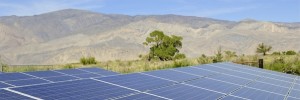
Myth 9: You Won’t Live in Your Home Long Enough to Get Your Investment Back
Fact: Depending on the type of solar panels you install and location of installation; fact is solar panel arrays can actually repay their investment within 6 to 15 years based on usage. Not to forget the subsidies, tax credits and other incentives that hasten a return on investment. Solar panels also help boost the resale of the house allowing for a significant rise in return on investment when you sell your property.
Myth 10: Solar Panels Require a Tracking System to Follow the Sun’s Angle
Fact: When solar panels are installed, they are positioned in such a way be the installer so as to maximize their exposure to sun. It means a tracking system isn’t needed. Also newer types of solar panels have built-in pre-integrated tracking system that allows changing the solar panel’s position throughout the day increasing the efficiency gains as well as power generation capacity.
Myth 11: Solar Panel Systems Are Often Poorly Installed
Fact: Fact is that the solar industry is regulated and has set standards and regulations. As such every company that is in the industry must adhere to the strict compliance standards. All solar installers must have a qualified and trained team to execute a project. Best is to do thorough inquiry about them before letting them to install the solar panels. No company will risk reputation be doing haphazard work, in an industry where reputation matters and regulations can debar who are not up to the mark.
Myth 12: Solar Panel Systems Store Excess Energy in Batteries
Fact: in reality majority of homeowners who install solar power systems do not store power generated via solar in batteries. Instead most of them are connected to the power grid ; and gain credit for feeding back excess power generated using solar panels, back to the electrical grid via net metering. Though it is good idea to add a battery bank to store power generated by solar arrays, but it will result in escalation of cost with regards to materials, installation, and maintenance.
Myth 13: Manufacturing Solar Panels Requires More Energy Than Solar Panels Ever Produce
Fact: According to a 2004 National Renewable Energy Laboratory study, it takes between 1 to 4 years for energy savings accumulated by producing power from solar panels to equal the energy cost incurred for producing the solar panels. As is known solar panels have a life span of around 25 to 30 years depending on use, as such 87% – 97% of the energy produced by the solar panels is clean energy i.e. no noise pollution and/or greenhouse gas emissions either. As solar technology improves production efficiency; the energy payback period is expected to come down further.
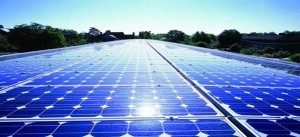
Myth 14: Solar Power is Only for Environmental Advocates
Fact: Solar power is free and is for everyone’s benefit. Environmental benefits of solar power allow homeowners and businesses to not just save money but also ensure energy security. The Indian Railway is adopting solar power in big way under ‘Mission 41K ’, and plans to deploy solar panels in most of its railway stations thereby saving on fuel cost, conserve environment, reduce pollution.
It will ultimately help boost use of solar power to produce electricity and benefit all in the long run. National Solar Mission that aims to generate 100 GW using solar power by 2022 has also prompted many government organizations to opt for solar power as a clean energy source for a variety of uses from running light machinery to making food products to making garments. As such solar power is for everyone’s benefit.
Myth 15: Solar Power Actually Lower Value of Your Home
Fact: Truth is buying and installing a solar energy system will actually increase value of your home. As in most cases solar panels are considered as upgrades, akin to renovation of home. an average-sized solar array. As for third-party owned or leased solar power systems, the increase is value is largely neutral particularly for prepaid leases.
Myth 16: Subsidies for Green Schemes are Pushing Up Power Bills
Fact: Subsidies for solar power actually is around 6% of average household electricity bill currently and it’s expected to fall further. The ‘peak demand’ – time when demand for power is highest mostly summer is a major factor that is driving up the cost. As more houses, more A/Cs come up during same time it puts massive strain on the grid that may lead to blackouts. In order to cover that more power plants can be set up at considerable cost pushing up the cost. So solar power is an insurance policy against rising costs. The potential to save money for monthly utility bill depends on how much power is consumed. As utility bills go up, solar power is expected to help save money for years to come.
Myth 17: Solar Power isn’t Financially Viable Without Subsidies So it’s for Rich Only
Fact: Truth is not just rich but also lower and fixed/middle income households are the biggest user of solar power. While the rich opt for bigger units; lower and fixed/middle income people opt for smaller units. Cutting emissions is just one of benefits of solar. While the rich people use solar power to supplement their power requirement; lower and fixed/middle income people use solar power to save money.
Technological advancements have made solar energy cheaper and a rapid decline in solar energy costs allows it to compete even with the cheapest fossil fuel. Also cost reductions via solar power is courtesy increased knowledge and economies of scale associated with large-scale deployment. Inside major cities rich are opting for solar while in suburbs low to middle income people including retirees are opting for solar as they are more concerned about rising electricity prices.
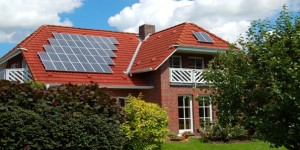
Myth 18: You Need to Own House to Enjoy Solar Power Benefits
Fact: Even if you rented or leased house no problem. A collective community solar program, where a group of people pool in together; to enjoy benefits from a single, shared solar array can be the answer. After the solar arrays are installed at any location, a house or a flat complex; the purchase & installation cost of the solar energy system are divided among all the participants. You only need to worry about your portion and when you leave the accommodation; you can actually negotiate it other stakeholders or the owner about being compensated for your contribution.
Myth 19: Solar Power Can’t Compete with Coal Power
Fact: Reality is fossil fuel-based power is built on government subsidies, and continues to enjoy government assistance. Apart from that fossil fuels don’t pay for greenhouse gases they emit, or other health and environmental effects resulting from them. Also coal mining is responsible for a number of health & environmental concerns. The more coal is burnt, the more damage is done to environment. On the other hand solar power don’t emit greenhouse gases or cause other health and environmental concern. Solar power is cleaner than “clean coal” one of the dirtiest fossil fuels. So there is no comparison at all.
Myth 20: If Not South Facing Roof, You Can’t Deploy Solar Panels
Fact: While installing solar panels, the south slanting roof in northern hemisphere (or northern roof in southern hemisphere) is important. However, other If the roof line travels from north/south, then you can install solar panels on the both east and west roofs. While panels on eastern roof will get sunlight in the morning, those on western roof will sunlight in afternoon & late in the day. However roofs aren’t only place to install solar panels. If the roof is small but there is open space in your property, you could install a pole or ground mounted solar panel. A purpose built structure like a solar carport or shed also works fine.
Myth 21: All Solar Cell Manufacturers Lose Money
Fact: Many manufacturers of silicon based solar photovoltaic cells compete in same segment using same technology. As such there is tough competition and with constant changes in leadership as well as consolidation via lots of mergers/acquisitions/sells offs there got to be some winners and losers with surviving expecting profits in the long term future.as such some makers lose money while some take in moolah. It 8is expected that in future roof and construction companies with focus on Building Integrated Photovoltaics (BIPV) will succeed. Other makers involved in segments such as thin, lightweight and flexible solar panels profitable.
Myth 22: Solar Panels will be More Harmful After 25 Years
Fact: In reality most solar panel manufacturers are expected to recycle the solar panels after the end of estimated life of 25 years. However, this 25 year limit is based on full capacity utilization. Though after 25 the solar panels may continue to produce electricity albeit at reduced capacity. So whether they will be recycled depends on the end user. But will they be Harmful for environment or end user is debatable. So it’s up to the end user to find out about whether a solar panel manufacturer has a effective recycling program or not. If yes it’s up to you to recycle them and get new solar panels working at 100% capacity or continue to use the same solar panels at reduced capacity.
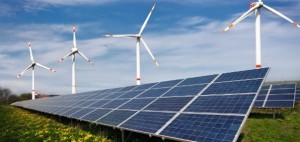
Myth 23: Solar Power Can Replace All Fossil Fuels
Fact: Even though non-renewable energy sources or fossil fuels like oil, coal, uranium are expected to last a few hundred years, and it is imperative to find their alternative but to say that renewable energy sources like solar power will completely replace sources like coal is literally impossible. However solar power can really cut dependence on coal as fuel. But to do that in technically feasible manner is a big practical challenge.
Initiatives like Indian Railway adopting solar power in big way under ‘Mission 41K ’, and plans to deploy solar panels in most of its railway stations thereby saving on fuel cost, conserve environment, reduce pollution and benefit all in the long run. National Solar Mission that aims to generate 100 GW using solar power by 2022 can also help mitigate problems related to use of solar power as a clean energy source. What is needed is proper time bound planning.
Myth 24: Variability Dooms Renewable Energy
Fact: The sun doesn’t always shine so a solar park will produce up to a certain limit to its total installed capacity. Even though renewable energy sources like geothermal plants and hydroelectric facilities produce to near maximum unless there is scarcity of water. Variability does require some level of backup power to offset waste, and can lead to renewable-energy generation being used as backup power. For instance In wind power, the fact that its output isn’t always available same at any one location is becoming less important. In recent years wind power unit operators have managed to forecast capacity utilization and have integrated wind power with other renewable energy sources like solar power.
As Investment in new transmission lines pick up pace, wind farms located in isolated location can produce maximum energy in variable proportion backed by solar power. Individual wind farms can be very volatile but scores of wind farms spread over large area show less volatility as wind blows everywhere in all directions. Similarly individual solar farms can be very volatile; but scores of solar farms spread over large area show less volatility. So variability can be helpful.
Myth 25: Cheap Natural Gas Is the Enemy of Solar Power
Fact: While natural gas has really transformed the electricity sector, it actually compliments renewables energy like solar power. While of all fossil fuels natural gas is least polluting and is expected to last the longest; and have low upfront costs, But in the long term, volatility in gas prices could hamper its growth. Here the renewable energy source like solar power can come to rescue they don’t produce harmful emissions, and are in ample supply.
About Vivaan Solar
Vivaan Solar as a EPC contractor is a solar PhotoVoltaic system installer & integrator. We have installed 60 MW solar park in Madhya Pradesh, 5 MW in Punjab, 8 MW in Uttarakhand and an upcoming park in Karnataka. We are also MNRE accredited channel partner for Rooftop. We have done turnkey works for multiple companies across the country and has third party agreements with some of the leading industries/commercial institutions across the state. We are an MNRE accredited channel partner. For more info you can visit our website: www.vivaansolar.com or contact us at mail- info@vivaansolar.com.


We are currently in O&M of power plants and would like to enter into residential roof top business
ear
sir/madam
Thanks for the appreciation for writing the blog and do spread the word about our blog.
We do like to share useful information on solar power and renewable energy and technology and add our perspective and please share the info with your friends.
Keep watching this space for the latest blog updates and do watch our social media profile.